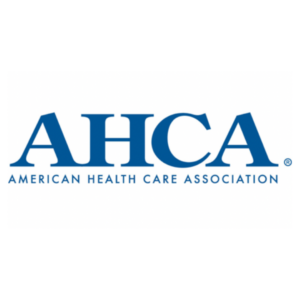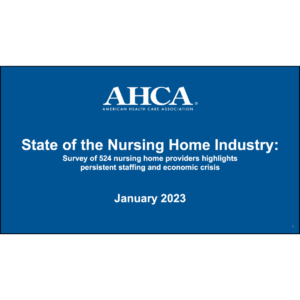Key Findings from the Marcum 3-Year Nursing Home Statistical Analysis
Marcum LLP has released its fifth annual 3-Year Nursing Home Statistical Review. Covering 2019 through 2021, the analysis examined the effects of the Covid-19 pandemic on skilled nursing facilities. It highlights how the pandemic impacted overall spending and is intended to help skilled nursing facilities improve their operational and financial performance, as well as help guide strategic planning.
About the 3-Year Nursing Home Statistical Review

The review is based on the analysis of the Centers for Medicare and Medicaid Services’ database of Medicare cost reports filed by nursing homes. For the 2019 to 2021 analysis, more than 38,000 Medicare cost reports were reviewed, and the resulting data is presented nationally and regionally. Data was collected and analyzed across 15 categories, including nursing, dietary, laundry, housekeeping, average hourly wage, and more.
Key Findings from the 2023 Nursing Home Statistical Review
The review provides key information about the average hourly wage for nursing homes, which facilities can use to confirm that they are paying competitive wages, an important factor in staff retention and recruiting. According to the report, the average hourly wage increased from 2019 and 2021 by 13.27% nationally. In 2019, the national average hourly wage was $20.21. It increased to $21.60 in 2020, and then increased again to $22.89 in 2021.
More specifically, nursing wages also increased. National nursing wages increased from $21.09 in 2019 to $22.70 in 2020, and then to $24.94 in 2021. RN hourly wages increased from $33.86 in 2019 to $35.70 in 2020, and then to $38.98 in 2021. LPN hourly wages also saw an increase from $25.90 in 2019 to $27.44 in 2020 and to $29.62 in 2021. CNA hourly wages saw smaller increases, growing from $15.11 in 2019 to $16.34 in 2020 and $17.94 in 2021. The analysis also provides hourly wage data for contract staff.
In addition to salary data, the report also analyzes employee benefit expenses. It found that the employee benefit-to-salary percentage has remained relatively steady. The national average in 2019 was 42.77%, and increased to 46.28% in 2020. In 2021, that ratio decreased slightly to 45.63%. The report suggests that salaries and benefits are closely tied to a facility’s revenue.
The pandemic heavily impacted revenue, total cost, and net income or loss per patient day, too. Nationally, total revenue per patient day (excluding COVID-19 public health emergency funding) increased by 4.73%. Total cost per patient day increased from $279.86 in 2019 to $335.43 in 2021. Those increased costs were partially due to efforts to retain staff, like pandemic-related bonuses and increased wages, the purchase of additional PPE supplies, and more. Such pandemic-related expenses mean that the total cost per patient day in 2019, pre-pandemic, compared in in 2021 has increased by 19.85%.
The report also analyzed the Medicare gross revenue per patient day after the Medicare payment model converted from PDPM to RUGs in 2019. The report found that during the first year of RUGs, Medicare gross reimbursement per patient day significantly increased, on average. In 2019, gross reimbursement per patient day was $527.07. In 2020, it increased to $565.59, and in 2021, it reached $578.71.
The report’s data provides a valuable look at trends not only nationally, but also by region. The data in the report can help nursing homes evaluate whether their finances and spending are in keeping with trends, and individual elements like average salary data can help nursing homes to confirm whether they are offering competitive wages to attract quality staff.

Paige Cerulli is a contributing writer to i Advance Senior Care.
Related Articles
Topics: Featured Articles , Finance , Medicare/Medicaid , Staffing











